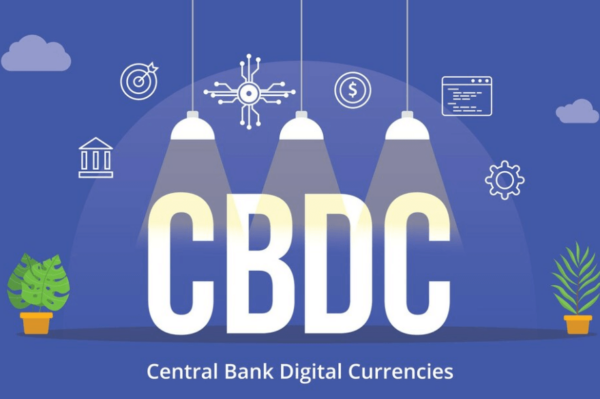Central Bank Digital Currency (CBDC)
A Central Bank Digital Currency (CBDC) represents a new form of digital currency that is issued directly by a central bank. Unlike traditional currencies issued in physical form (like banknotes and coins) or digital currencies managed by commercial banks, CBDCs are the digital equivalent of a country’s fiat currency and are backed by the central bank.

Key Characteristics of CBDCs
- Issuer: CBDCs are issued by central banks, which are national institutions responsible for monetary policy and financial stability. This distinguishes CBDCs from other digital currencies like cryptocurrencies, which are typically decentralized and not issued by any state authority.
- Liability: Just like physical currency, a CBDC is a liability of the central bank. This means it is under the full guarantee and regulation of the issuing central bank, providing a level of security and trust.
- Denomination: CBDCs are denominated in the sovereign currency of the issuing country. For example, if the U.S. Federal Reserve were to issue a CBDC, it would be denominated in U.S. dollars.
- Digital Form: Unlike physical cash, CBDCs exist only in digital or electronic form. This can facilitate faster and more efficient financial transactions and may also provide more accessibility to banking services.
- Regulation and Oversight: Being issued by central banks, CBDCs are subject to the regulatory frameworks and monetary policies of the respective countries. This regulatory aspect can help in preventing issues like money laundering and financial terrorism, which are concerns with decentralized digital currencies.
Effects of CBDCs
The introduction of CBDCs could revolutionize the financial system by providing a digital, secure, and efficient means of conducting transactions. They could enhance the effectiveness of monetary policies, improve financial inclusion, and reduce the costs and time associated with money transfers and payments.
However, the implementation of CBDCs also raises questions about privacy, cybersecurity, and the impact on traditional banking systems. As such, many countries are currently in various stages of research, development, and trial implementation of CBDCs.
Benefits of CBDCs
- Elimination of Settlement Risk: Settlement risk, the risk that one party fails to deliver the terms of a contract with another party at the time of settlement, can be significantly reduced or eliminated with CBDCs. Programmable transactions ensure that funds are transferred only when all conditions of the transaction are satisfied, thereby reducing the risk of default.
- Reduced Cost of Payments: CBDCs have the potential to lower the cost of payments. By providing a public infrastructure for payments, they can reduce or eliminate the fees typically associated with private payment networks and intermediaries. This can be particularly beneficial for cross-border transactions, which often involve higher fees and longer processing times.
- Increased Efficiency and Speed: Programmable transactions can automate and streamline payment processes, leading to increased efficiency and speed in financial transactions. This automation can be particularly useful in complex financial agreements, like escrow services, where payments are contingent on certain conditions being met.
- Enhanced Transparency and Compliance: With programmable transactions, every condition and fulfillment can be recorded, providing a transparent audit trail. This feature can aid in regulatory compliance and anti-money laundering (AML) efforts, as it provides a clear and immutable record of transactions and their associated conditions.
- Financial Inclusion: CBDCs, by virtue of being digital and potentially accessible via mobile technology, can play a significant role in enhancing financial inclusion. They can reach unbanked or under banked populations who may not have access to traditional banking services but do have access to mobile devices.
Challenges and Considerations
While the benefits are significant, the implementation of CBDCs with programmable transactions also presents challenges. These include ensuring robust cybersecurity measures, protecting user privacy, and determining the regulatory framework under which these digital currencies will operate. Additionally, there is the challenge of integrating this new form of currency into the existing financial ecosystem without causing disruption.
As central banks around the world continue to explore and pilot CBDCs, the potential for programmable transactions to transform the financial landscape remains a key area of interest and development.
LATEST CRYPTOCURRENCY NEWS
YOU CAN WIN $200 EVERY HOUR




